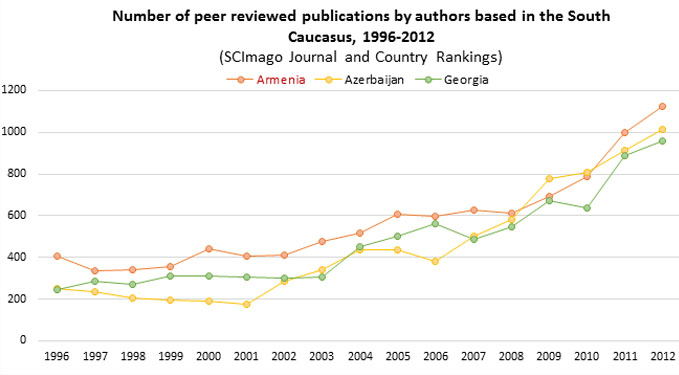
The Caucasus Research Resource Centers unveiled a report Monday, February 22, detailing the scientific output trends in the South Caucasus between 1996 and 2012.
According to the report, Armenia's science sector has been steadily developing throughout those 15 years.
Increases in the quantity of peer reviewed publications, on the one hand, and citations, on the other, are believed to measure scientific progress. In the 1960s, efforts to document, explore and explain trends in scientific progress gave rise to the quantitative study of science and science policy – Scientometrics.
The platform presents several important indicators of scientific output in the countries of South Caucasus.
Number of publications in peer reviewed journals by academics affiliated with the country’s scientific institutions: the number of such publications by authors from all three South Caucasus countries, especially Armenia, has increased between 1996 and 2012.

The ratio of cited peer reviewed publications to uncited ones: importantly, the number of both cited and uncited publications has been increasing in each scientific discipline, with the ratio, however, slightly declining.

International collaboration, measured by the ratio of peer reviewed publications co-authored by individuals from different countries: international collaboration seems to have increased between 1996 and 2012. Azerbaijan falls behind, while international collaboration is slowly but steadily increasing in Armenia and Georgia.

To sum up, the number of peer reviewed publications is the most rapidly growing indicator, suggesting positive developments in the scientific community of the countries of the South Caucasus. However, it seems that there is still work to do when it comes to the impact of the publications by scholars in the South Caucasus.

